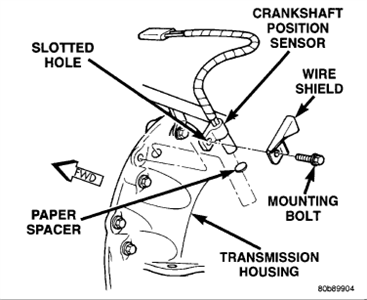Grand Cherokee oxygen sensor locations for 4.0
and 4.7 engines


Four wires (circuits) are used on each O2 sensor:
- 12–volt feed circuit for the sensor heating
element
- Ground circuit for the heater element
- Low-noise sensor return circuit to the
PCM
- Input circuit from the sensor back to
the PCM to detect sensor operation
O2S Sensor removal
Never apply any type of grease to the oxygen
sensor electrical connector, or attempt any soldering of the sensor
wiring harness.
WARNING: THE EXHAUST MANIFOLD, EXHAUST PIPES AND
CATALYTIC CONVERTER(S) BECOME VERY HOT DURING ENGINE OPERATION. ALLOW
ENGINE TO COOL BEFORE REMOVING OXYGEN SENSOR.
1. Raise and support vehicle.
2. Disconnect O2S pigtail harness from main
wiring harness.
3. If equipped, disconnect sensor wire harness
mounting clips from engine or body.
CAUTION: When disconnecting sensor electrical
connector, do not pull directly on wire going into sensor.
4. Remove O2S sensor with an oxygen sensor
removal and installation tool.
02S Sensor installation
Threads of new oxygen sensors are factory coated
with anti-seize compound to aid in removal. DO NOT add any additional
anti-seize compound to threads of a new oxygen sensor.
1. Install O2S sensor. Tighten to 22 ft. lbs. (30
N·m) torque.
2. Connect O2S sensor wire connector to main
wiring harness.
3. If equipped, connect sensor wire harness
mounting clips to engine or body. When Equipped: The O2S pigtail harness
must be clipped and/or bolted back to their original positions on
engine or body to prevent mechanical damage to wiring.
Hope thats help (remember comment and rated this).



 Spacer on crankshaft timing sensor and camshaft position sensor.
Spacer on crankshaft timing sensor and camshaft position sensor.
















×